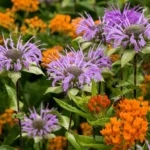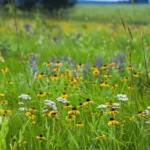
Beautiful flowers gardenia Plants For Your homes
Earth’s mountainous regions are truly awe-inspiring. They are filled with rugged landscapes and rocky peaks. These places have captured the hearts of adventurers and nature lovers. They offer a chance to connect with nature’s beauty.
These regions were shaped by the Earth’s powerful forces over millions of years. Tectonic forces, volcanic activity, and erosion have carved out the mountains we see today. The Andes, stretching across seven countries, are the longest mountain range. The Himalayas, in five countries, have some of the highest peaks, including the famous Mount Everest.
Mountainous regions are more than just beautiful. They are vital for life on Earth. They support a wide variety of plants and animals. The snow leopard and wildflowers in the Rocky Mountains show the beauty of these places.
For those who love adventure, mountains are perfect. Trails lead to beautiful lakes, waterfalls, and breathtaking views. Places like the Matterhorn and Mount Rainier call to those who dare to climb. For a more relaxed time, mountain villages and ski resorts offer a peaceful getaway.
The world is filled with diverse mountains, each with its own unique features. Fold Mountains, like the Himalayas, form from tectonic forces that push the Earth’s crust together. This creates folded rock layers. These ranges cover about a fifth of the Earth and include the Himalayas, which have more ice than the polar regions.
Block Mountains, such as the Sierra Nevada, form when the Earth’s crust moves along fault lines. This creates striking landscapes that amaze us. Dome Mountains, like the Adirondacks, are uplifted rock layers. Volcanic Mountains, such as Mount Fuji and Mount St. Helens, come from volcanic materials.
These mountains are not just beautiful but also show the Earth’s dynamic nature. Plateau Mountains, like the Colorado Plateau, combine elevation with flat terrain. They invite adventurers to explore their vast areas.
Residual Mountains, such as the Scottish Highlands, are left over from once tall ranges. They were shaped by wind, water, and ice over millions of years. Horn Mountains, like the Matterhorn, are made by glaciers, creating sharp peaks. Isolated Mountains, such as Mount Rainier, stand alone, offering a unique experience.
Despite their beauty, these mountains are fragile habitats. Climate change threatens them, putting the plants and animals at risk. The Eastern Himalayas are home to red pandas and snow leopards. The Virunga Mountains in Africa protect the last mountain gorillas.
Efforts are underway to protect these species and their habitats. This includes working with communities in China, India, and Nepal. It also means asking oil companies to avoid Virunga National Park.
Mountains inspire and captivate people worldwide. From New Zealand’s Mount Cook to the United States’ Mount Rainier, they offer beauty and adventure. Mountains like Machapuchare in Nepal and the Trango Towers in Pakistan are special to those who explore them.
For those who want to bring a piece of this beauty home, gardening tools and guides can help. They can create stunning rock gardens and drought-tolerant landscapes inspired by these majestic mountains.
| Mountain | Location | Height (m) | Notable Feature |
|---|---|---|---|
| Mount Everest | Nepal/China | 8,848 | Highest mountain in the world |
| Mount Fuji | Japan | 3,776 | One of Japan’s three sacred mountains |
| Matterhorn | Switzerland/Italy | 4,478 | Europe’s most famous mountain |
| Denali | United States | 6,190 | Tallest peak in North America |
| Mount Kilimanjaro | Tanzania | 5,895 | Africa’s highest mountain |
The Himalayas stretch about 1,500 miles across India, Pakistan, Afghanistan, China, Bhutan, and Nepal. They show off a stunning mix of geography. You’ll find snow peaks, glaciers, deep valleys, rivers, and forests. These landscapes are truly breathtaking.
About 40 to 50 million years ago, the Indian and Eurasian tectonic plates collided. This made the Himalayas. The rocks under the Earth bent and formed faults. The mountains started forming around 20 million years ago, making them the highest on Earth.
The Himalayas have three main ranges: the Greater, Lesser, and Outer Himalayas. They’re split into four mountain belts. The Greater Himalayas, where Mount Everest is, block the weather and have different sides.
There are around 15,000 glaciers in the Himalayas. The Siachen glacier is the biggest outside the polar areas. The Himalayas also create rivers like the Ganges and Indus, which are key for water and life.
The climate in the Himalayas changes with the altitude and location. The lower areas have mild weather, but it gets colder higher up. The south gets more rain, while the north is dry.
The Himalayas affect the weather and water flow. They stop cold winds from Central Asia, creating the South Asian monsoon. This brings a lot of rain in the summer.
| Altitude Range | Climate Characteristics | Vegetation |
|---|---|---|
| Below 5,000 feet (1,500 meters) | Subtropical climate with hot summers and mild winters | Tropical and subtropical broadleaf forests |
| 5,000-9,000 feet (1,500-2,700 meters) | Temperate climate with warm summers and cool winters | Temperate broadleaf forests |
| 9,000-13,000 feet (2,700-4,000 meters) | Subalpine climate with cool summers and cold winters | Temperate coniferous forests and montane grasslands |
| Above 13,000 feet (4,000 meters) | Alpine climate with short, cool summers and long, severe winters | Alpine meadows and tundra vegetation |
The Himalayas’ varied geography and climate support a rich variety of life. You’ll find everything from rare plants to snow leopards and red pandas. It’s a place full of natural wonders.
Mountains are not just breathtaking; they are key homes for many plants and animals. They have everything from tall forests to meadows full of wildflowers. These places are full of life and are crucial for many species. Mountains cover about 25% of the Earth and home to over 12% of the world’s people, with many relying on them for their needs.
The Sky Islands region in the southwestern United States and northwestern Mexico is a hotspot for biodiversity. It has about two dozen species found only in these mountains. The Chiricahua Mountains are especially rich in birds of prey.
Endangered animals like snow leopards, mountain gorillas, and golden eagles live in these mountains. This shows how diverse life can thrive in these tough environments.
| Region | Unique Characteristics |
|---|---|
| Sky Islands | Highest biodiversity in inland North America, endemic species |
| Chiricahua Mountains | World’s highest diversity and density of nesting birds of prey |
Mountain ecosystems are under threat from habitat loss, invasive species, overuse, and pollution. The Rosemont Copper Mine in the Santa Rita Mountains would harm at least 4,400 acres of land. It would threaten five species, including the Rosemont and Sonoran talus snails.
We need to protect these landscapes and use sustainable practices. In 2011, a legal agreement helped protect several species. Groups like The Nature Conservancy have also worked to protect millions of acres in mountains.
Climate change is melting glaciers and raising temperatures in mountains. This makes it vital to protect these habitats. By using sustainable practices and supporting conservation, we can keep the unique life of mountains safe for the future.
Trekking in the mountains is an unmatched experience. It offers breathtaking landscapes, untouched nature, and a sense of achievement. From the Himalayas’ tall peaks to the Andes’ rugged trails, there are many trekking adventures waiting for you around the world.
The Himalayas stretch across Nepal, India, Bhutan, and Tibet. They are home to famous trekking paths. The Everest Base Camp Trek lets you follow in the footsteps of legendary climbers and see Mount Everest up close. The Annapurna Circuit takes you through different landscapes, from green forests to high-altitude deserts. The Langtang Valley Trek is a hidden gem, showing the beauty of the Langtang National Park.
| Trekking Route | Duration | Difficulty | Highlights |
|---|---|---|---|
| Everest Base Camp Trek | 12-14 days | Challenging | Close-up views of Mount Everest, Sherpa culture, stunning mountain scenery |
| Annapurna Circuit | 14-20 days | Moderate to Challenging | Diverse landscapes, high mountain passes, ancient villages |
| Langtang Valley Trek | 7-10 days | Moderate | Langtang National Park, remote villages, glaciers, and snow-capped peaks |
Getting ready for a mountain trek needs careful planning. First, check your fitness level and pick a trek that suits you. Regular exercise, like cardio and strength training, builds the endurance needed for long days on the trail.
It’s also key to pack the right gear for a safe and comfy trek. Essential items include:
Acclimatization is vital at high altitudes. Let your body adjust to the lower oxygen levels by ascending slowly and taking rest days. Staying hydrated, eating well, and listening to your body can prevent altitude sickness.
Trekking permits are needed for many popular routes. You can get them through trekking agencies or government offices. Hiring a local guide or porter makes your trek more enjoyable by sharing their knowledge and providing support and safety in remote areas.
With the right preparation, fitness, and adventure spirit, a trek in the mountains can change your life. It offers a chance to disconnect, challenge yourself, and connect deeply with nature.
Mountains are more than just beautiful landscapes; they are crucial to the cultures of local communities. These natural wonders have shaped the traditions and beliefs of many ethnic groups over time. The rich culture of the mountains shows the strong bond between people and their environment.
In the Himalayas, different ethnic groups have created their own festivals and foods. This area mixes Hindu and Buddhist cultures, with many monasteries and temples. Visiting these places lets you see the spiritual beliefs that have lasted for generations.
Joining in on traditional ceremonies and talking with locals helps us understand their ways. You’ll see festivals that celebrate the seasons and rituals for the mountains. These experiences show the heart of the community.
| Region | Cultural Significance | Examples |
|---|---|---|
| Himalayas | Diverse ethnic groups, unique customs and festivals | Hindu and Buddhist cultures, monasteries, temples |
| Andes | Rich indigenous heritage, traditional practices | Inca ruins, colorful textiles, Andean music |
| Alps | Long history of mountain culture, tourism | Alpine villages, yodeling, cheese-making |
Mountain regions show their culture through their food. Each place has its own special tastes and dishes, shaped by local ingredients and cooking. From thick stews to fragrant spices, mountain food lets you taste the region’s traditions.
Living in tough terrain, mountain people are friendly and strong. They love to share their stories and traditions with visitors. By connecting with these communities, we learn to value their cultures. We also see why it’s vital to keep these traditions alive as the world changes.
Earth’s majestic mountain ranges are under threat from many dangers. These threats harm their ecosystems and the people who live there. Climate change, deforestation, and bad tourism are big problems.
Climate change is a big threat to mountains. It causes glaciers to melt, weather patterns to change, and temperatures to rise. This makes mountains more likely to have natural disasters like avalanches and floods.
It also leads to losing homes for animals and some animals going extinct. We need to know which areas and people are most at risk. Then, we can take steps to help them adapt and protect these fragile places.
Many people visit mountains every year, which helps local communities. But, bad tourism can harm the environment. Things like too many visitors, trash, and harming nature are big problems.
We need to make tourism better for the mountains. This means supporting projects that help the environment and teaching visitors to be kind to nature. We should also help local people develop in a way that protects nature.
| Threat | Impact | Mitigation Strategies |
|---|---|---|
| Climate Change | Receding glaciers, habitat loss, species extinction, increased natural disasters | Vulnerability assessments, targeted adaptation strategies, building resilience |
| Deforestation | Soil erosion, loss of biodiversity, disruption of water cycles | Strict regulations, oversight, tree planting campaigns, empowering local communities |
| Unsustainable Development | Destruction of natural habitats, pollution, strain on resources | Sustainable planning, green infrastructure, renewable energy, waste management |
| Irresponsible Tourism | Overcrowding, littering, degradation of ecosystems | Eco-friendly practices, supporting local initiatives, respecting wildlife habitats |
We need to tackle these problems with many solutions. This includes local actions, laws, and teaching people. By working together, we can protect the mountains for the future. It’s important for us all to help keep these beautiful places safe.
Mountains are truly amazing natural wonders that capture our hearts. They are full of life and support many different plants and animals. These places are also great for outdoor fun and adventure.
Many cultures see mountains as sacred places. They are often where people go to worship and make pilgrimages. This shows how special mountains are to us.
But, mountains are facing big challenges like climate change and deforestation. In 2002, the United Nations made a big statement by calling it the “International Year of Mountains.” Now, projects like the Global Change and Mountain Regions study how mountains change and affect our resources.
Groups like UNESCO and the FAO are working hard to save mountains. They want to keep these important places safe for the future. It’s up to us to help them by being careful tourists and supporting local communities.
We need to keep exploring and loving mountains, but we must also protect them. By doing so, we can make sure they stay beautiful for all of us. Mountains show us how diverse and strong life on Earth is. It’s our job to keep them safe for the next generations.




